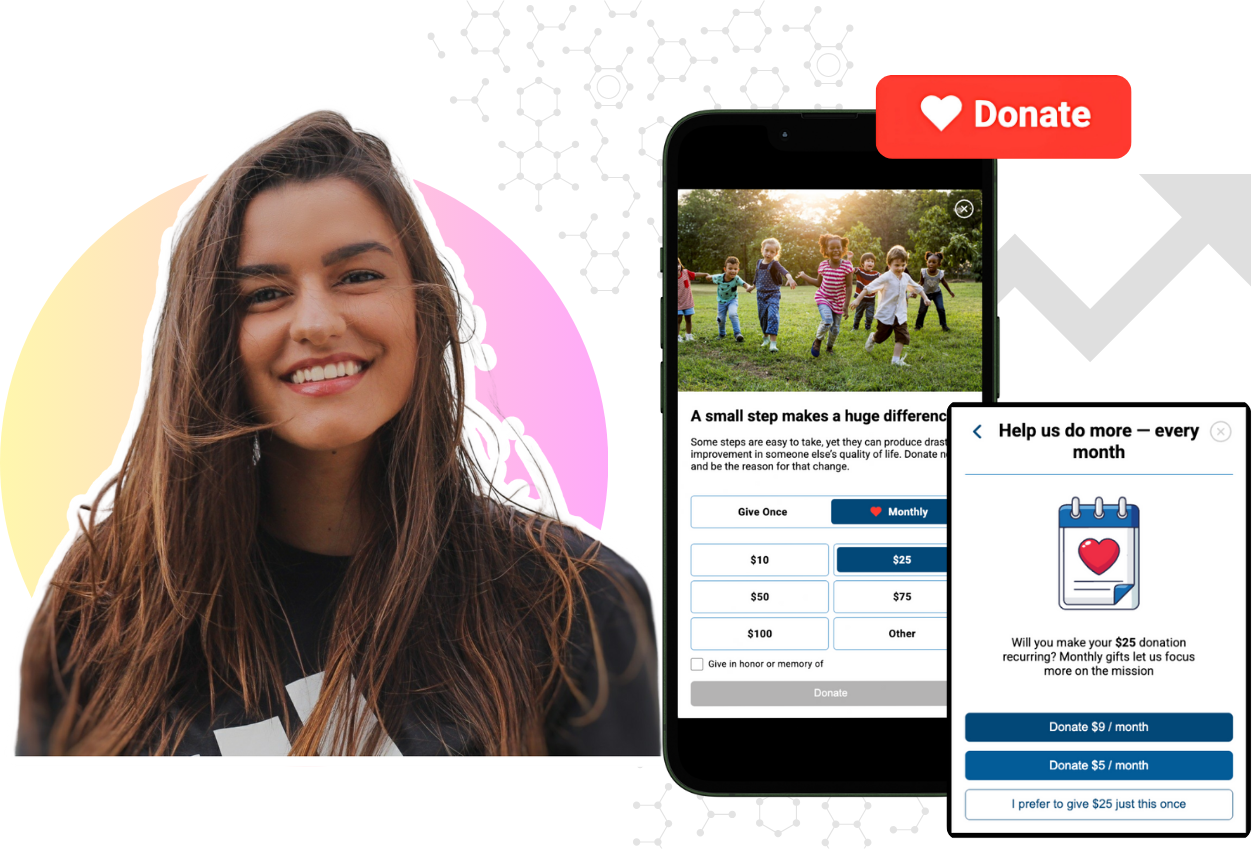Donors Want to Feel Connected
The busier and more crowded our lives become, the greater the gap between what remains important to us and all the other things seeking our...

Mobile-First Pop-Up Donation Form
Launch mobile-first pop-up forms in minutes, use built-in tools to capture more donations, and optimize the giving experience—no dev team required.
New to online donation pages for your nonprofit? Start here.
Donation page A/B testing - no science degree needed.
Keep your donation page loading fast - and drive higher conversions.

The 4 Types of Online Donation Experiences
89% of donors leave without giving. Learn how to use the right donation form to close the gap and boost conversions.

Technology and people are inseparable today. That seems obvious, of course. We’re all so accustomed to the myriad of ways technology influences our day-to-day existence that it’s become second nature to us. But as obvious as it seems, when it comes to nonprofits, the impact of technology on fundraising has remained elusive.
That gap is notable, considering how deeply technology is woven into our lives. After all, donors are people (and consumers). They’re active participants in digital networks of all kinds. From personal interactions on social networks to keeping up with the news, downloading music, watching a movie, buying a book, even purchasing a car, they move seamlessly between digital channels of all kinds.
In fact, the evidence shows that donors turn to technology in the act of giving to causes they care about as much as they do in other parts of their lives:
Clearly, there is a substantial opportunity for NPOs to tap into the widespread use of technology by today’s donors. This has profound implications for how the nonprofit world must interact with donors if they want to build a growing, sustainable organization.
This isn’t to suggest there aren’t hurdles to be overcome. Many nonprofits continue to rely on legacy systems that weren’t designed with today’s donors in mind. For example, these systems aren’t cloud-based and aren’t as easily accessible. They usually comprise tools that are not integrated, and for that reason can't work closely with your CRM. Moving to systems designed for today’s donors, thereby ensuring a holistic view of your donors, may well require replacing these older systems, as well as your practices overall. This can present NPOs with major challenges.
At the end of the day, incorporating donors’ unprecedented use of technology in donor relations boils down to having the right tools in place and knowing how to put them to use. This is the path to using data more effectively in the donor lifecycle. iDonate designed its Donor Fundraising Platform (DFP) to enable just that.
It provides the technology platform that NPOs can employ to build lasting relationships with donors, accelerate conversion rates, and support a foundation for long-term sustainability. I invite you to learn more about our DFP solution for nonprofits.

The busier and more crowded our lives become, the greater the gap between what remains important to us and all the other things seeking our...

If there’s a key marker of where nonprofits stand today in terms of making progress in their fundraising, it’s the figure of 2%. That’s the...

While it may not be “news,” recent data on giving in America paints a troubling and persistent trend. Reports show that fewer than half of American...